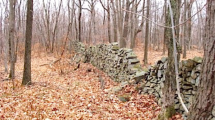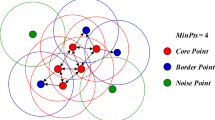Abstract
For describing height changes, ground movement models (bivariate polynomials) are used. These models approximate the ground movement measured at discrete bench marks by high-precision levelings. Because fault edges can be existent in the regions of investigation, they have to be detected and separated from the smooth ground movement. The present study proposes an algorithm that is able to detect and analyze subregions where fault edges are most likely. This algorithm is investigated based on a simulated example and tested using real sample regions: subregions containing a fault edge most likely can be identified. Furthermore, this fault edge is analyzed by revealing outliers in the approximation. If the spatial distribution and magnitude of these outliers is inconspicuous, the existence of a significant fault edge is very unlikely. Based on first considerations, the likeliness of a fault edge can even be analyzed by calculating curvature radii if using denser sampled measurements of remote sensors. These curvature radii can afterwards be used to quantify the damage-potential of the fault edge.





















Similar content being viewed by others
References
Burger W, Burge M (2008) Digital image processing: an algorithmic introduction using Java. Springer, Berlin
Cignoni P, Rocchini C, Scopigno R (1998) Metro: measuring error on simplified surfaces. Comp Graph Forum 17(2):167–174
Edelsbrunner H (1995) Smooth surfaces for multi-scale shape representation. Lect. Notes Comput Sc 1026:391–412
Holst C, Eling C, Kuhlmann H (2013) Anforderungen und Grenzen von Bodenbewegungsmodellen zur Beschreibung des Bodensenkungsverhaltens im Rheinischen Braunkohlenrevier. Markscheidewesen 120(1–2):13–22
Holst C, Eling C, Kuhlmann H (2013) Automatic optimization of height network configurations for detection of surface deformations. J Appl Geodesy 7(2):103–113
Holst C, Zeimetz P, Nothnagel A, Schauerte W, Kuhlmann H (2012) Estimation of focal length variations of a 100-m radio telescope’s main reflector by laser scanner measurements. J Surv Eng 138(3):126–135
Jaboyedoff M, Oppikofer T, Abellán A, Derron MH, Loye A, Metzger R, Pedrazzini A (2012) Use of lidar in landslide investigations: a review. Nat Hazards 61(1):5–28
Keys RG (1981) Cubic convolution interpolation for digital image processing. IEEE T Acoust Speech 29:1153–1160
Kratzsch H. (2008) Bergschadenskunde, 5edn. Deutscher Markscheider-Verein e.V. Bochum, Germany
Lague D, Brodu N, Leroux J (2013) Accurate 3D comparison of complex topography with terrestrial laser scanner: application to the Rangitikei Canyon (n-z). ISPRS J Photogramm 82:10–26
Lancaster P, Salkauskas K (1986) Curve and surface fitting - an introduction. Academic Press LTD., London
Pressley A (2001) Elementary differential geometry. Springer, London, Berlin, Heidelberg
Preusse A, Schulte R (2012) Bodenbewegungen im Rheinischen Braunkohlenrevier. In: Bergschadensforum. Elsdorf, Germany
Rasche H, Fenk J (1987) Senkung der Tagesoberflache durch Grundwasserentzug im Braunkohlenbergbau der Deutschen Demokratischen Republik̈. Neue Bergbautechnik 17(4):128–131
Ritter GX, Wilson JN (2001) Handbook of computer vision algorithms in image algebra, 2nd edn. CRC Press, Boca Raton, London, New York
Sandwell D T (1987) Biharmonic spline interpolation of geos-3 and seasat altimeter data. Geophys Res Lett 14(2):139–142
Scaioni M, Roncella R, Alba M (2013) Change detection and deformation analysis in point clouds: application to rock face monitoring. Photogramm Eng Remote Sens 79(5):441–456
Solomon C, Breckon T (2010) Fundamentals of digital image processing: a practical approach with examples in Matlab. John Wiley & Sons
Zeimetz P., Kuhlmann H. (2011) Use of parametric models for analyzing ground movement measurements in the rhenish lignite mining area. World of Mining—Surface and Underground 5:256–264
Ziou D, Tabbone S (1998) Edge detection technique—an overview. Int J Pattern Recognit Image Anal 8:537–559
Acknowledgments
The writers thank the anonymous reviewers for their valuable comments and suggestions that helped to significantly improve the quality of the paper.
Author information
Authors and Affiliations
Corresponding author
Rights and permissions
About this article
Cite this article
Holst, C., Kuhlmann, H. Detecting and analyzing fault edges in sampled ground movements. Appl Geomat 7, 103–114 (2015). https://doi.org/10.1007/s12518-014-0145-9
Received:
Accepted:
Published:
Issue Date:
DOI: https://doi.org/10.1007/s12518-014-0145-9




